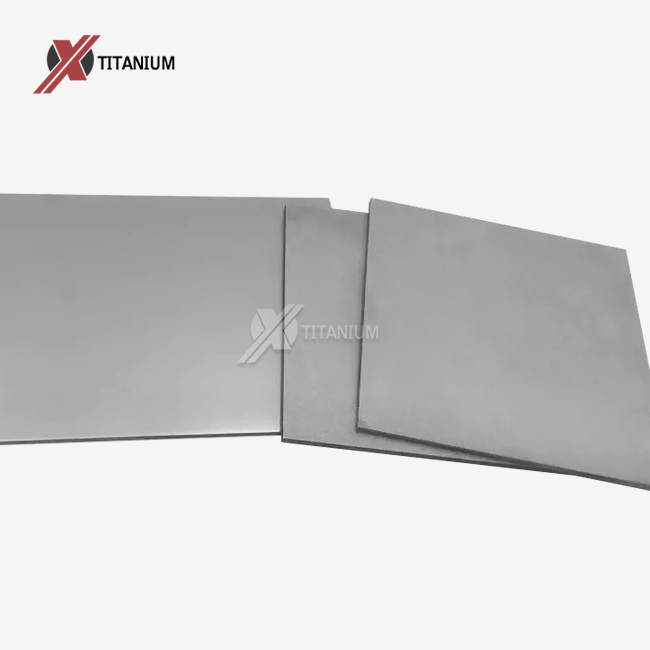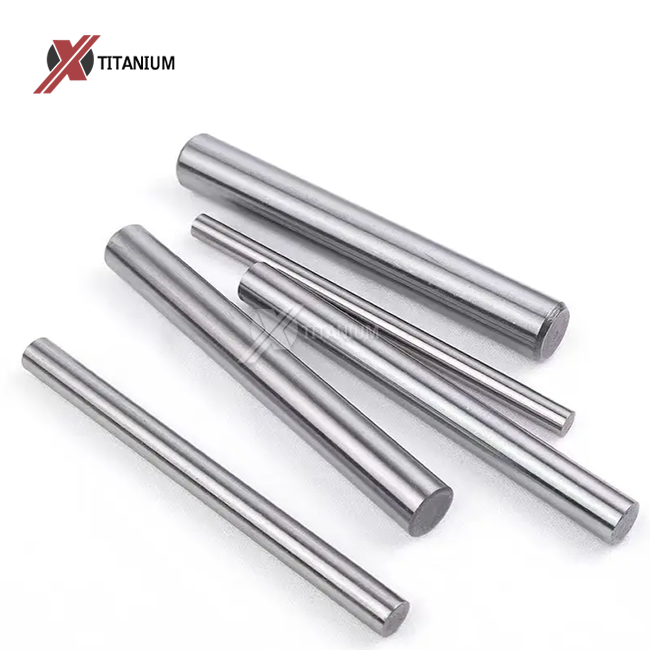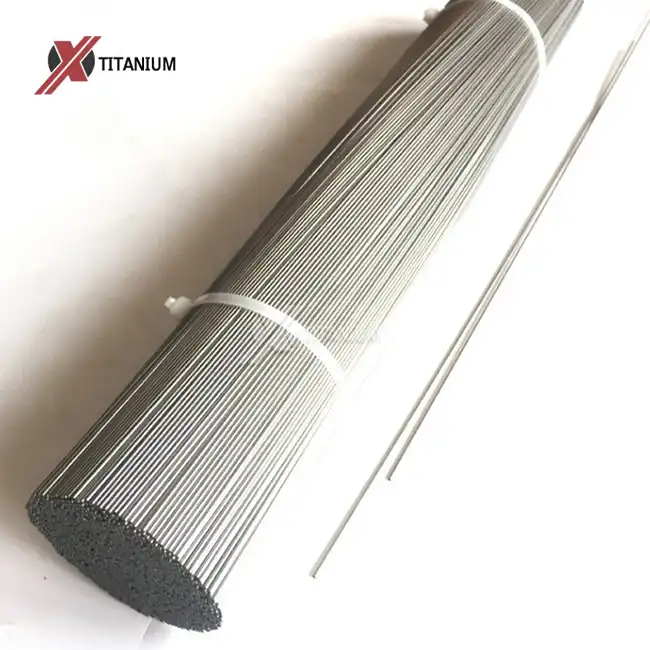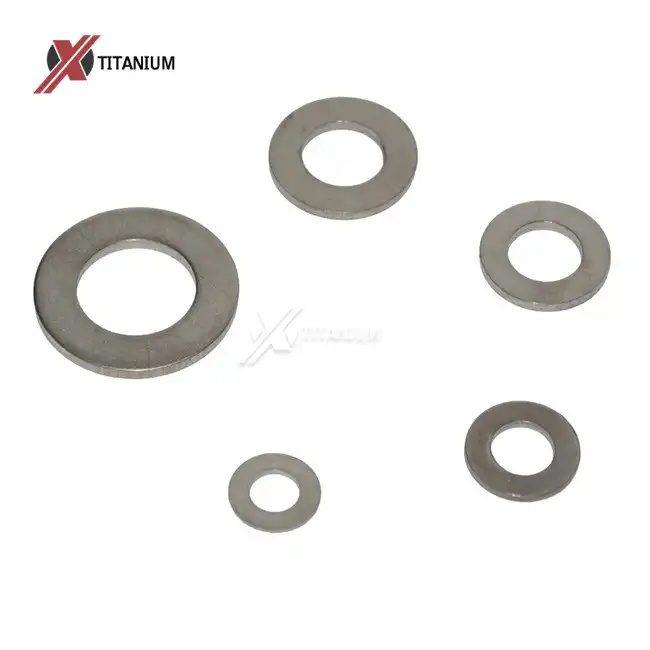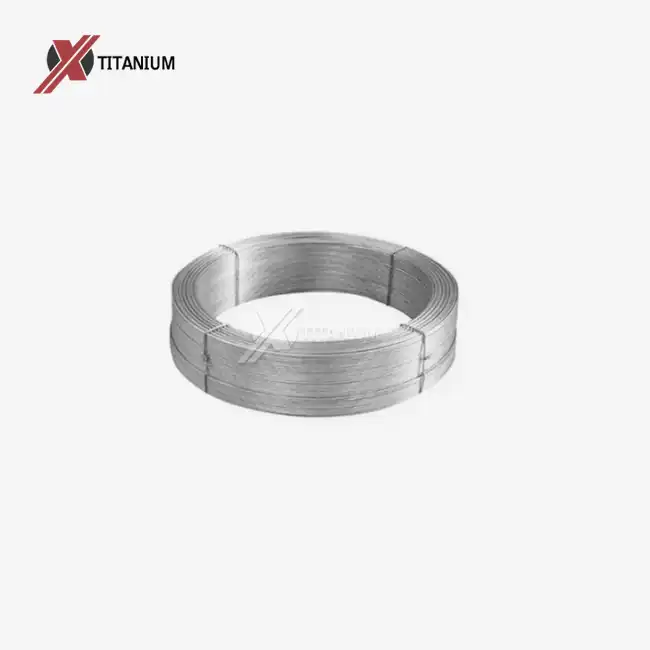The Unique Surface Oxide Properties of Grade 2 Titanium
Formation and Composition of the Oxide Layer
Grade 2 titanium plate spontaneously forms a thin, stable oxide layer when exposed to air or other oxidizing environments. This process, known as passivation, creates a protective barrier that contributes significantly to the material's biocompatibility. The oxide layer primarily consists of titanium dioxide (TiO2), which exists in various crystalline forms, predominantly anatase and rutile.
The thickness of this oxide layer typically ranges from 2 to 10 nanometers, depending on environmental conditions and surface treatments. Despite its thinness, this layer provides remarkable protection against corrosion and chemical reactions. The stability of the oxide layer is further enhanced by its ability to rapidly reform if damaged, ensuring continuous protection of the underlying titanium substrate.
Chemical Inertness and Corrosion Resistance
One of the key properties that make grade 2 titanium plate biocompatible is the exceptional chemical inertness of its surface oxide layer. This inertness stems from the strong covalent bonds between titanium and oxygen atoms in the TiO2 structure. As a result, the surface remains stable in various biological environments, resisting degradation and preventing the release of potentially harmful metal ions into surrounding tissues.
The corrosion resistance of grade 2 titanium is particularly noteworthy. The oxide layer acts as a barrier against aggressive ions and molecules present in biological fluids, effectively preventing electrochemical reactions that could lead to material degradation. This resistance to corrosion is crucial in maintaining the integrity of medical implants and devices over extended periods, ensuring their long-term safety and effectiveness.
Surface Energy and Wettability
The surface energy and wettability of the oxide layer on grade 2 titanium plate play a significant role in its biocompatibility. The TiO2 surface exhibits high surface energy, which translates to excellent wettability. This property is essential for promoting the adsorption of proteins and other biomolecules onto the surface, a critical step in cell adhesion and subsequent tissue integration.
The hydrophilic nature of the oxide layer allows for the formation of a thin water layer on the surface, which acts as an interface between the implant and the biological environment. This water layer facilitates the adsorption of proteins in their native conformation, preserving their biological activity and promoting favorable cell-surface interactions.
Interaction Between Grade 2 Titanium Surface and Biological Systems
Protein Adsorption and Cell Adhesion
The interaction between grade 2 titanium plate and biological systems begins with the adsorption of proteins onto its surface. The oxide layer's high surface energy and wettability promote the attachment of various proteins, including fibronectin, vitronectin, and albumin. These adsorbed proteins serve as mediators between the implant surface and cells, providing binding sites for cell adhesion molecules.
The adsorbed protein layer influences subsequent cell adhesion, proliferation, and differentiation. Osteoblasts, fibroblasts, and other cell types can readily attach to the protein-coated titanium surface, initiating the process of tissue integration. The specific composition and conformation of the adsorbed protein layer can be influenced by surface properties such as roughness and chemical composition, allowing for some degree of control over cellular responses.
Osseointegration and Tissue Compatibility
Grade 2 titanium plate's ability to osseointegrate is a crucial aspect of its biocompatibility, particularly in orthopedic and dental applications. Osseointegration refers to the direct structural and functional connection between living bone tissue and the implant surface. The oxide layer plays a vital role in this process by providing a stable substrate for bone cell attachment and growth.
The surface oxide properties of grade 2 titanium promote the differentiation of mesenchymal stem cells into osteoblasts, the cells responsible for new bone formation. These osteoblasts deposit a collagen-rich extracellular matrix directly onto the implant surface, which subsequently mineralizes to form new bone tissue. The strong bond between the oxide layer and the newly formed bone ensures long-term stability of the implant.
Immune Response and Inflammation
The biocompatibility of grade 2 titanium plate is further evidenced by its minimal immune response and low inflammatory potential. The stable oxide layer prevents the release of metal ions that could trigger an adverse immune reaction. Additionally, the surface properties of the oxide layer influence the behavior of immune cells, such as macrophages, that come into contact with the implant.
Studies have shown that titanium oxide surfaces tend to promote an anti-inflammatory phenotype in macrophages, reducing the production of pro-inflammatory cytokines. This modulation of the immune response contributes to better tissue integration and reduced risk of implant rejection. The ability of grade 2 titanium to maintain a favorable immune environment around the implant site is crucial for long-term biocompatibility and implant success.
Surface Modifications to Enhance Biocompatibility
Physical Modifications: Surface Roughness and Topography
While the natural oxide layer of grade 2 titanium plate already exhibits excellent biocompatibility, various surface modification techniques can be employed to further enhance its performance in specific applications. One approach involves altering the surface roughness and topography of the material. Techniques such as sandblasting, acid etching, and laser texturing can create micro- and nano-scale surface features that influence cell behavior and tissue integration.
Increased surface roughness generally promotes better osseointegration by providing more surface area for cell attachment and mechanical interlocking with bone tissue. Specific surface patterns can also guide cell alignment and influence the direction of tissue growth. These physical modifications can be tailored to optimize the implant's performance for different anatomical locations and loading conditions.
Chemical Modifications: Surface Functionalization
Chemical modification of the grade 2 titanium plate surface offers another avenue for enhancing biocompatibility. Surface functionalization techniques involve altering the chemical composition of the oxide layer or attaching specific molecules to the surface. These modifications can improve the material's interaction with proteins, cells, and tissues.
One common approach is the incorporation of bioactive elements such as calcium and phosphate into the oxide layer. This can be achieved through various methods, including ion implantation or hydrothermal treatments. The presence of these elements on the surface can promote the formation of a bone-like apatite layer, enhancing osseointegration. Other chemical modifications include the attachment of organic molecules, such as growth factors or cell-adhesion peptides, to the surface to promote specific cellular responses.
Coatings and Surface Treatments
Applying coatings or performing specialized surface treatments on grade 2 titanium plate can further modify its biocompatibility properties. Hydroxyapatite coatings, for example, are widely used in orthopedic and dental implants to enhance bone bonding. These coatings mimic the mineral component of natural bone, providing a familiar environment for bone cells and promoting rapid osseointegration.
Other surface treatments, such as anodization, can alter the thickness and crystalline structure of the oxide layer. Anodized titanium surfaces often exhibit improved corrosion resistance and can be engineered to have specific pore sizes and distributions, influencing protein adsorption and cell behavior. Plasma spraying and sol-gel techniques offer additional options for creating bioactive surfaces with controlled composition and properties.
Conclusion
The biocompatibility of grade 2 titanium plate is primarily attributed to its unique surface oxide properties. The stable, inert titanium dioxide layer provides excellent corrosion resistance and chemical stability, preventing adverse reactions with biological tissues. The surface's high energy and wettability promote protein adsorption and cell adhesion, facilitating osseointegration and tissue compatibility. The oxide layer's ability to modulate immune responses further enhances its biocompatibility. While grade 2 titanium inherently possesses these favorable properties, various surface modification techniques can be employed to optimize its performance for specific biomedical applications, ensuring its continued prominence in the field of medical implants and devices.
As a leading grade 2 titanium plate supplier, Baoji Chuanglian New Metal Material Co., Ltd. is committed to providing high-quality titanium products for various industries, including medical applications. Our expertise in titanium manufacturing and surface treatments ensures that our grade 2 titanium plates meet the highest standards of biocompatibility and performance. For more information about our products or to discuss your specific requirements, please contact us at info@cltifastener.com or djy6580@aliyun.com.
FAQs
How does the surface finish of grade 2 titanium plate affect its biocompatibility?
The surface finish can significantly influence biocompatibility. Polished surfaces may reduce bacterial adhesion, while rougher surfaces can promote osseointegration. We offer various surface finishes, including bright, polished, pickled, and sandblasted, to suit different applications.
Can grade 2 titanium plates be customized for specific medical applications?
Yes, we provide customization services for grade 2 titanium plates, including specific sizes, thicknesses, and surface treatments to meet the unique requirements of medical device manufacturers and researchers.
What quality control measures are in place for grade 2 titanium plates used in medical applications?
Our quality control process includes rigorous testing such as hardness tests, bending tests, and hydrostatic pressure tests. We also offer third-party testing to ensure compliance with international standards for medical-grade materials.
References
1. Liu, X., Chu, P. K., & Ding, C. (2004). Surface modification of titanium, titanium alloys, and related materials for biomedical applications. Materials Science and Engineering: R: Reports, 47(3-4), 49-121.
2. Anil, S., Anand, P. S., Alghamdi, H., & Jansen, J. A. (2011). Dental implant surface enhancement and osseointegration. In Implant dentistry—A rapidly evolving practice. IntechOpen.
3. Textor, M., Sittig, C., Frauchiger, V., Tosatti, S., & Brunette, D. M. (2001). Properties and biological significance of natural oxide films on titanium and its alloys. In Titanium in medicine (pp. 171-230). Springer, Berlin, Heidelberg.
4. Pegueroles, M., Aparicio, C., Bosio, M., Engel, E., Gil, F. J., Planell, J. A., & Altankov, G. (2010). Spatial organization of osteoblast fibronectin matrix on titanium surfaces: Effects of roughness, chemical heterogeneity and surface energy. Acta Biomaterialia, 6(1), 291-301.
5. Palmquist, A., Omar, O. M., Esposito, M., Lausmaa, J., & Thomsen, P. (2010). Titanium oral implants: surface characteristics, interface biology and clinical outcome. Journal of the Royal Society Interface, 7(suppl_5), S515-S527.
